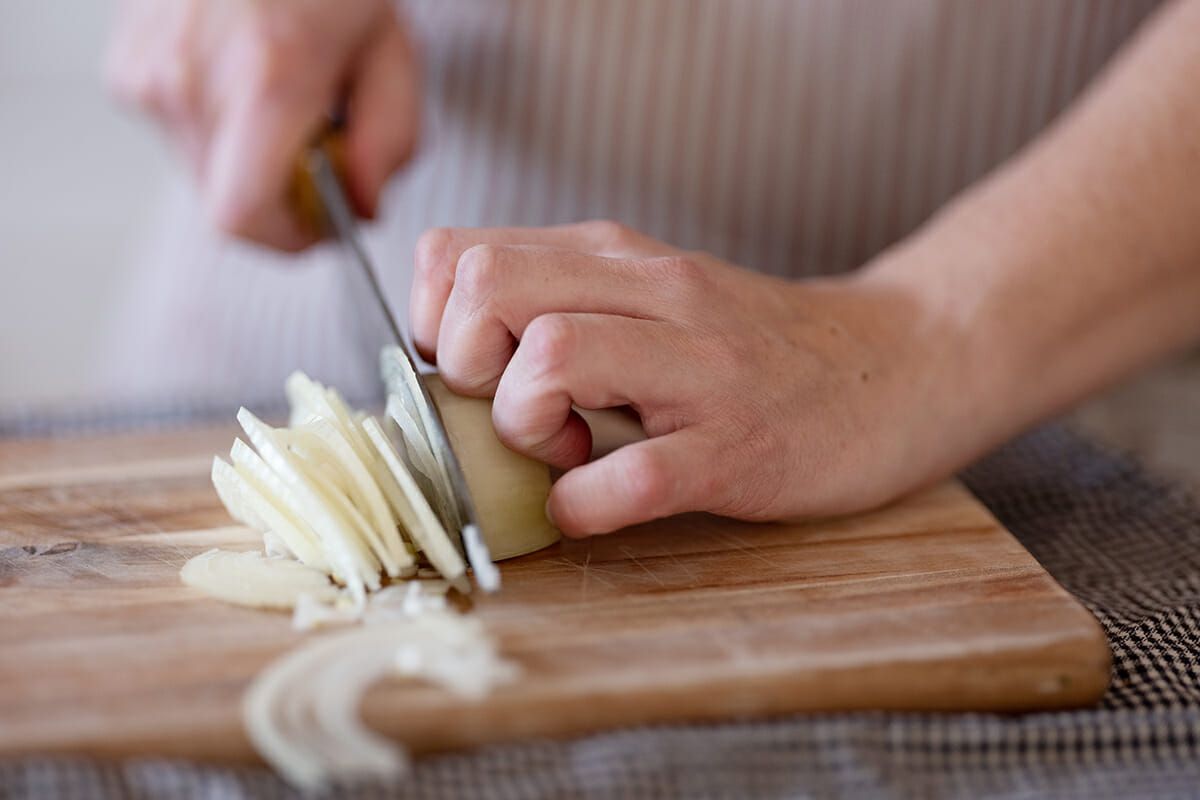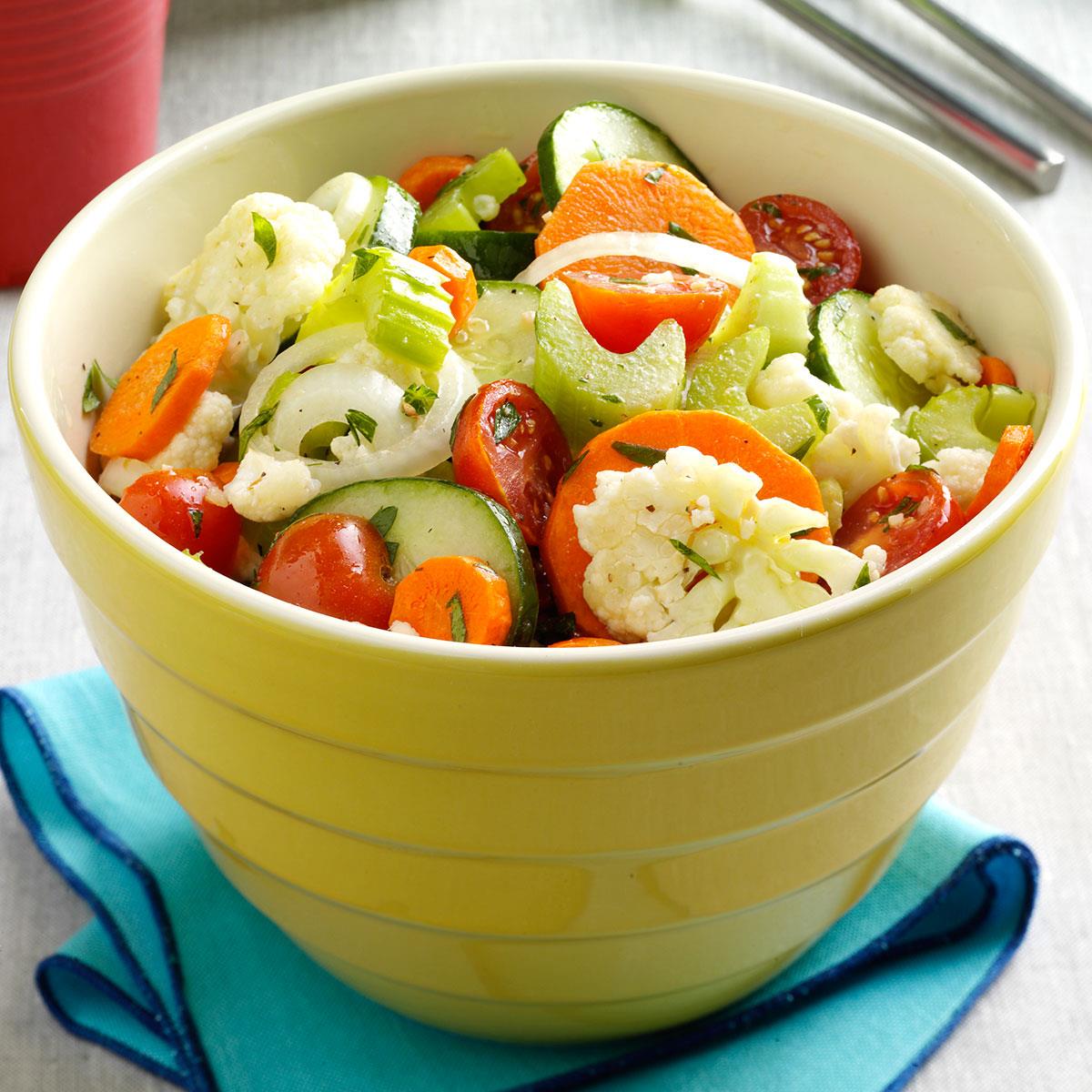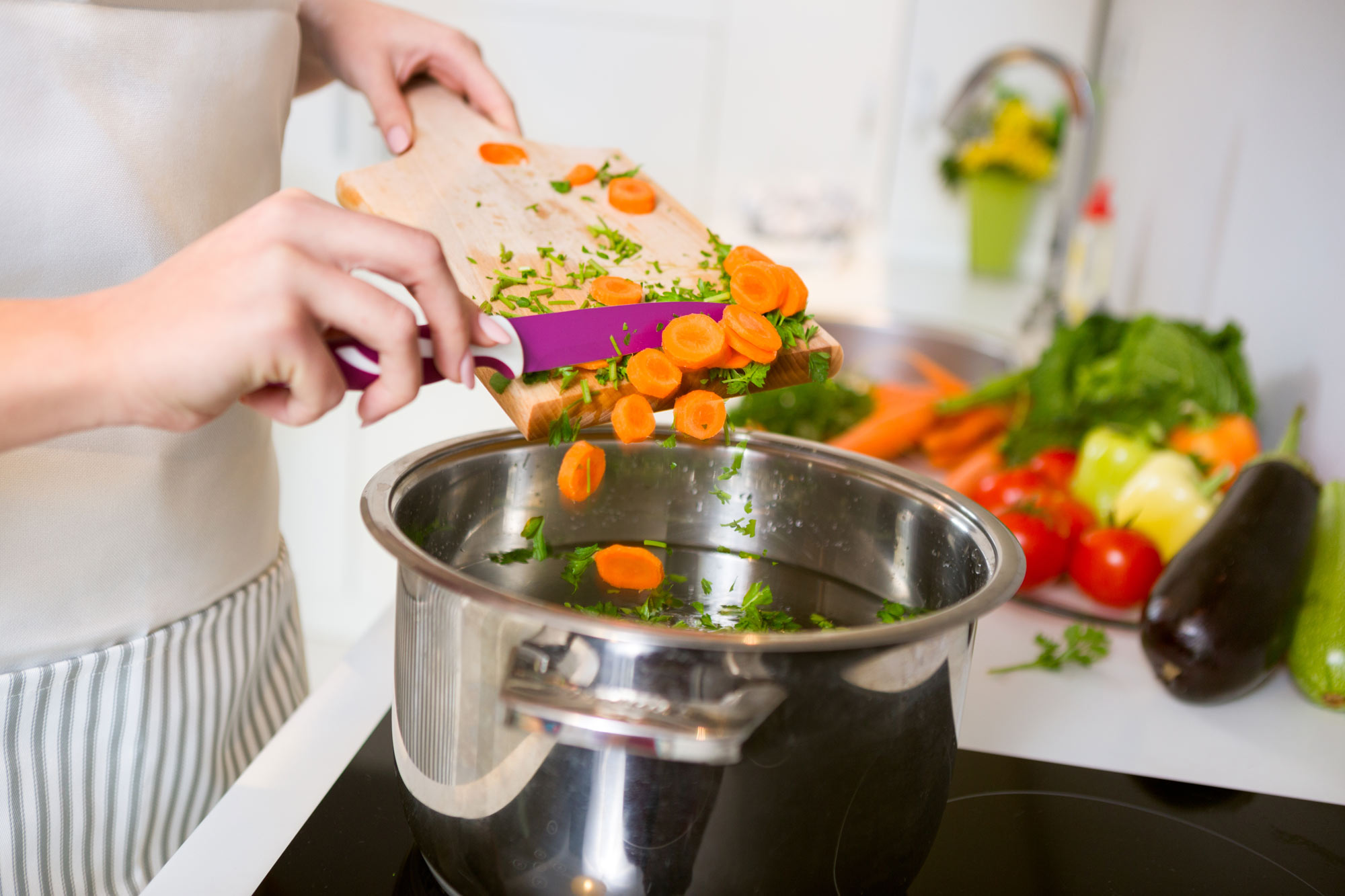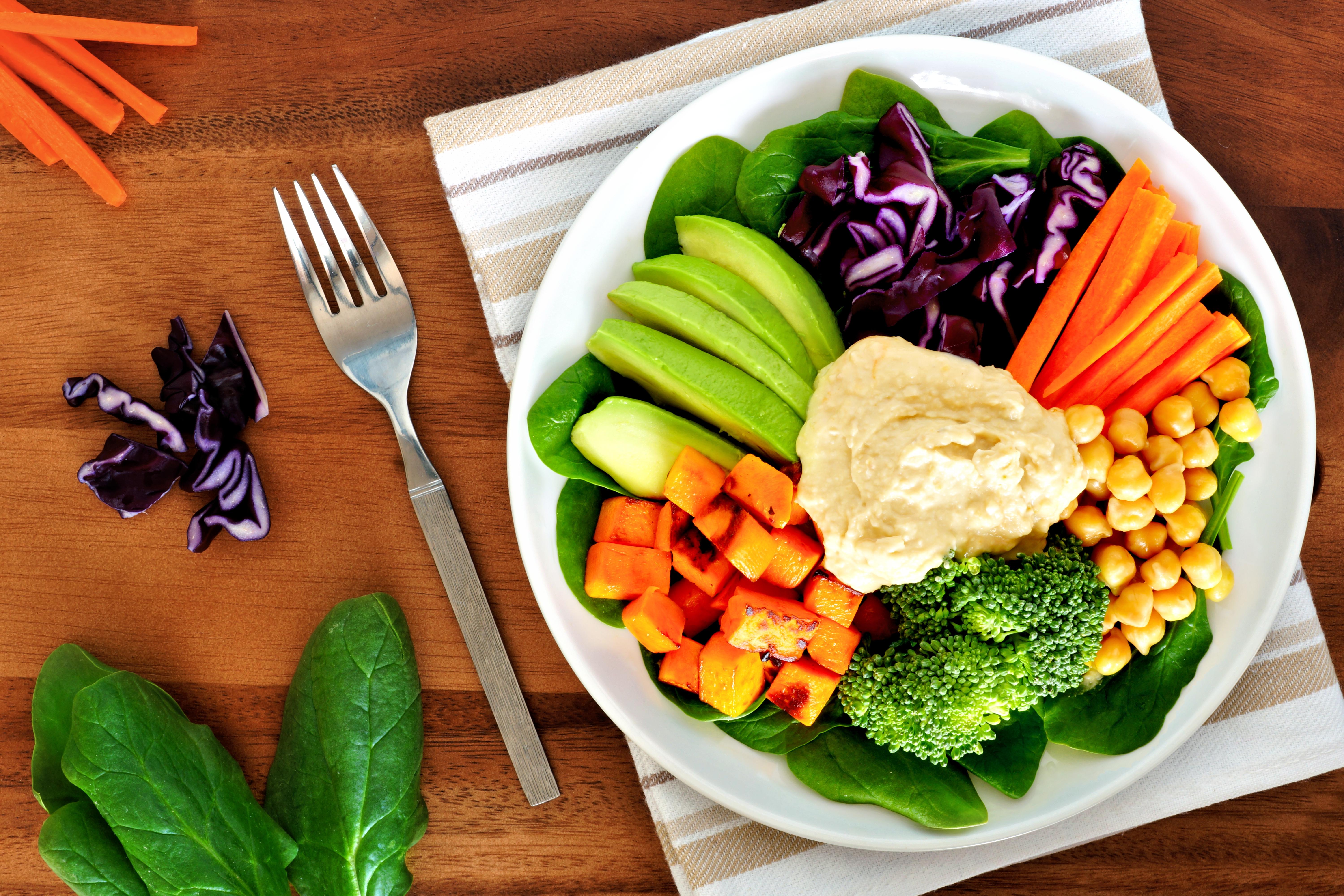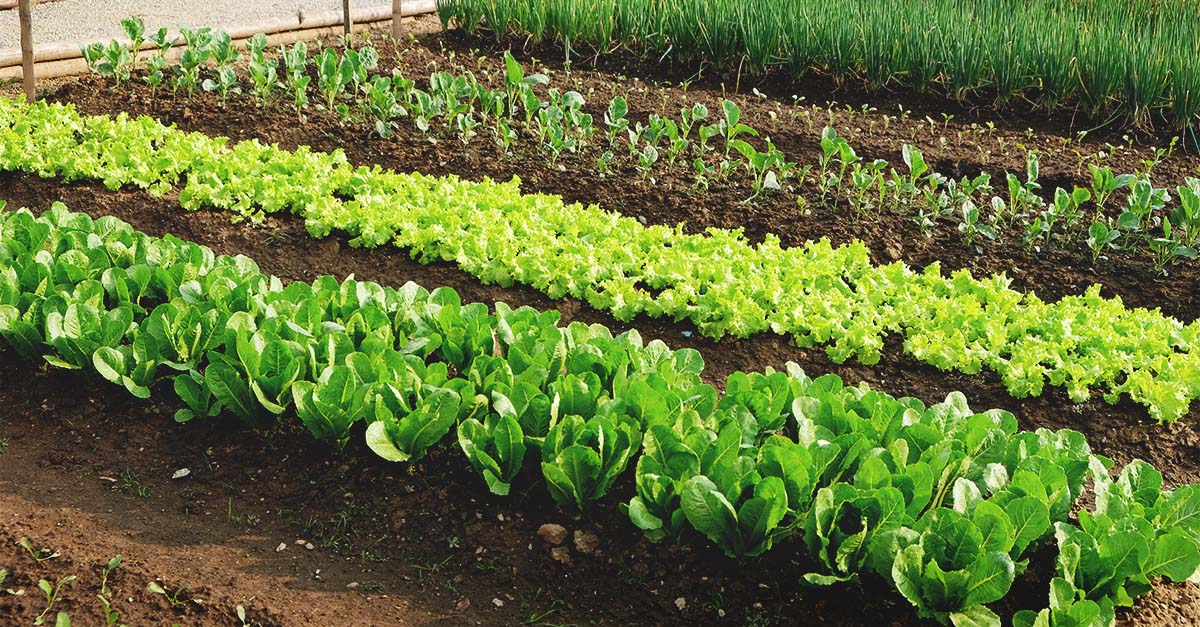Home>Gardening News and Trends>Latest News>How To Grill Vegetables On The Grill
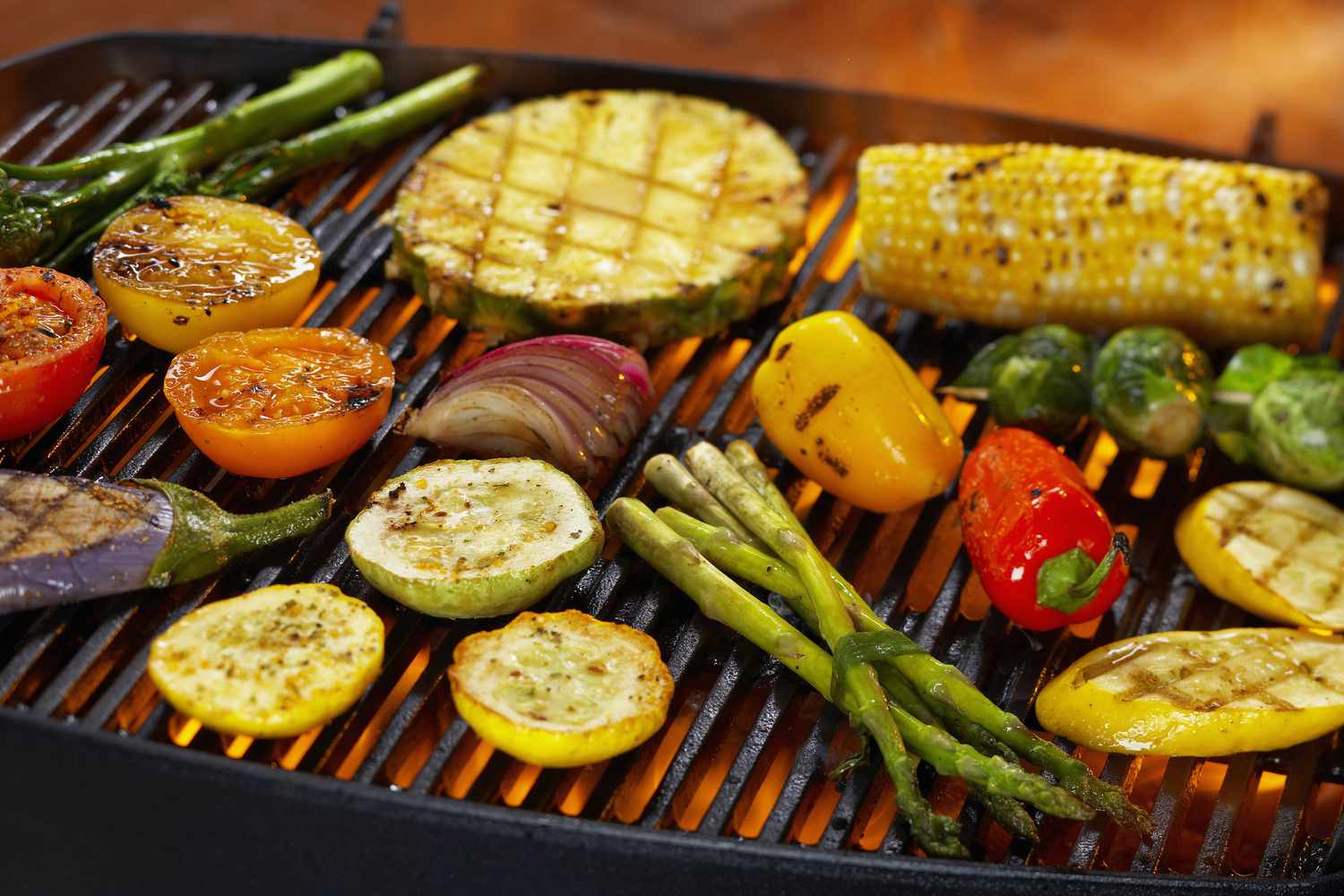

Latest News
How To Grill Vegetables On The Grill
Modified: January 22, 2024
Discover the latest news and techniques on how to grill vegetables on the grill. Master the art of grilling veggies with our expert tips and recipes.
(Many of the links in this article redirect to a specific reviewed product. Your purchase of these products through affiliate links helps to generate commission for Chicagolandgardening.com, at no extra cost. Learn more)
Table of Contents
Introduction
Grilling vegetables is a delicious and healthy way to enjoy the natural flavors and textures of various produce. Whether you are a vegetarian, looking to add more plant-based options to your diet, or simply want to try something new on the grill, learning how to grill vegetables is a skill worth mastering.
Grilled vegetables offer a unique and smoky flavor that pairs perfectly with grilled meats or can stand alone as a satisfying main course or side dish. Plus, when cooked on the grill, vegetables retain more nutrients compared to other cooking methods like boiling or frying.
Not only is grilling vegetables easy and versatile, but it also adds a delightful char and caramelization that enhances their taste. From corn on the cob to colorful bell peppers, zucchini, or asparagus, the possibilities are endless when it comes to grilling vegetables.
In this article, we will guide you through the process of grilling vegetables on the grill, from choosing the right produce to seasoning and cooking techniques. We will also provide some tips and tricks to ensure you achieve perfectly grilled vegetables every time.
So, dust off your grill and get ready to elevate your vegetable game with these expert grilling tips!
Choosing the Right Vegetables
When it comes to grilling vegetables, it is important to select the right produce that can withstand the high heat of the grill while still maintaining their shape and flavor. Here are some tips for choosing the best vegetables for grilling:
- Sturdy Vegetables: Opt for vegetables that have a firm texture and can hold up well on the grill. Some great options include bell peppers, zucchini, eggplant, onions, mushrooms, asparagus, corn on the cob, and even cabbage.
- In Season: Choose vegetables that are in season as they tend to have better flavor and are more readily available. Grilling seasonal produce not only ensures freshness but also supports local farmers.
- Size Matters: Consider the size of the vegetable and how it will cook on the grill. Vegetables like zucchini and bell peppers can be cut into large chunks or sliced, while asparagus and green beans are better grilled whole or in long bundles.
- Colorful Variety: Aim for a mix of vibrant and colorful vegetables to create an appetizing and visually appealing grilled vegetable platter. Different colors not only add visual interest but also provide a wider range of nutrients.
- Extra Flavor: Experiment with different flavors by incorporating vegetables with distinct tastes. For instance, sweet corn adds a touch of sweetness, while onions and garlic lend a savory note. This variety will add complexity to your grilled vegetables.
Remember, the key is to choose vegetables that you enjoy eating and that will complement your overall grilling menu. With a wide array of options available, you can mix and match vegetables to create endless combinations for your grilling adventures.
Preparing the Vegetables
Preparing the vegetables properly before grilling is crucial to ensure even cooking and enhance the overall flavor. Follow these steps to properly prepare your vegetables for grilling:
- Wash and Dry: Start by washing your vegetables under cold water to remove any dirt or debris. However, avoid soaking them for too long, as it can cause certain vegetables to become waterlogged. After washing, pat them dry with a clean kitchen towel or paper towels.
- Trim and Cut: Trim any excess stems or leaves from the vegetables as needed. For larger vegetables like zucchini or eggplant, slice them into even-sized pieces to ensure uniform cooking. Onions can be cut into thick rings, and bell peppers can be halved and seeded.
- Husk or Remove Silk: If you are grilling corn on the cob, peel back the outer husk without removing it entirely. Remove the silk strands and then fold the husk back into place. This will help to protect the corn while allowing it to cook and char on the grill.
- Precooking Some Vegetables: While most vegetables can be grilled directly, some may benefit from precooking to soften them up. For example, parboiling potatoes or sweet potatoes for a few minutes before grilling can help speed up the cooking process.
- Coat with Oil: Brush or toss the vegetables with a light coating of oil to prevent sticking and help with the caramelization process. Use oils with a high smoke point, such as canola or vegetable oil. You can also add some seasoning like salt and pepper at this stage, although additional seasoning can be added later.
By taking the time to properly prepare your vegetables, you’ll ensure that they cook evenly and develop delicious flavors while grilling. So, get your cutting board ready, and let’s move on to the next step: seasoning and marinating the vegetables.
Seasoning and Marinating
Seasoning and marinating your grilled vegetables can take their flavor profile to the next level. While vegetables are naturally delicious on their own, adding extra seasonings or marinades can enhance their taste and create a more dynamic eating experience. Here are some tips for seasoning and marinating your vegetables:
- Basic Seasoning: Start with a sprinkle of salt and pepper to bring out the natural flavors of the vegetables. You can also experiment with other herbs and spices like garlic powder, paprika, or dried herbs such as thyme or oregano.
- Marinating: Marinating your vegetables before grilling can infuse them with extra flavor and tenderness. Create a simple marinade using ingredients like olive oil, balsamic vinegar, soy sauce, lemon juice, or your preferred herbs and spices. Allow the vegetables to marinate for at least 30 minutes or up to a few hours for more intense flavor.
- Vegetable-Specific Seasonings: Consider using seasonings that complement specific vegetables. For instance, sprinkle chili powder and cumin on corn for a Mexican-inspired flavor, or brush asparagus with a mixture of lemon juice and garlic for a zesty kick.
- Basting Sauces: While grilling, basting sauces can add an extra layer of flavor and moisture to your vegetables. Barbecue sauce, teriyaki glaze, or honey mustard can be brushed onto the vegetables while they cook, creating a delicious glaze.
- Add Fresh Herbs: Right before serving, finish off your grilled vegetables with a sprinkle of fresh herbs like cilantro, basil, or parsley. This will add a pop of color and a burst of freshness to your dish.
Remember, the choice of seasonings and marinades depends on your personal taste preferences and the overall flavor profile you want to achieve. Don’t be afraid to experiment and get creative with different combinations to discover your favorite flavor combinations for grilled vegetables.
Now that your vegetables are all seasoned and marinated, it’s time to fire up the grill and get ready to cook them to perfection.
Preheating the Grill
Before you start grilling your vegetables, it’s important to preheat your grill to the proper temperature. Preheating ensures that the grill grates are hot enough to sear the vegetables and prevent them from sticking to the surface. Here’s how to properly preheat your grill:
- Clean the Grill: Start by cleaning the grill grates with a grill brush to remove any leftover residue from previous cooking sessions. This helps to create a clean surface for placing your vegetables and prevents any unwanted flavors from transferring.
- Gas Grill: If you are using a gas grill, preheat it by turning all burners to their highest setting. Close the lid and allow the grill to heat up for about 10-15 minutes. This will ensure that the grill reaches the desired temperature and that the grates are evenly heated.
- Charcoal Grill: If you are using a charcoal grill, light the charcoal and wait until the coals are covered with a layer of gray ash. Spread the charcoal evenly across the bottom of the grill and place the grill grates on top. Allow the grates to heat up for about 10-15 minutes with the lid closed.
- Temperature Check: To check if the grill is adequately preheated, hold your hand about 4 inches above the grates. If you can only hold your hand in that position for 2-3 seconds before it becomes too hot, the grill is at a high heat, which is suitable for direct grilling vegetables.
- Oil the Grates: Before placing the vegetables on the grill, use tongs and a folded piece of paper towel dipped in oil to rub the grates. This will further prevent the vegetables from sticking and add a bit of flavor.
Properly preheating the grill ensures that your vegetables cook evenly and develop those characteristic grill marks and smoky flavors. So, take the time to preheat your grill before placing your prepared vegetables on the hot grates.
With your grill now hot and ready, it’s time to explore different grilling techniques to cook a variety of vegetables to perfection.
Grilling Techniques
Grilling vegetables requires a different approach than grilling meat. Vegetables cook quickly and need to be monitored closely to prevent burning. Here are some grilling techniques to ensure your vegetables are cooked to perfection:
- Direct Grilling: This method involves placing the vegetables directly on the hot grill grates over a high heat. It works best for smaller and firmer vegetables like cherry tomatoes, sliced zucchini, or mushrooms. Remember to flip the vegetables halfway through cooking to ensure even browning on both sides.
- Indirect Grilling: Indirect grilling is ideal for larger and thicker vegetables, such as whole potatoes or bell peppers. It involves placing the vegetables away from direct heat and cooking them with the grill lid closed. This technique allows the vegetables to cook more slowly and evenly. To create indirect heat, turn off one burner on a gas grill or move the charcoal to one side of a charcoal grill.
- Grill Baskets or Skewers: To prevent smaller vegetables like cherry tomatoes, sliced onions, or diced bell peppers from falling through the grates, consider using a grill basket or skewers. A grill basket is a metal mesh tray that allows you to cook small or delicate vegetables without worrying about them slipping through. Skewering vegetables on metal or soaked wooden skewers is another great option for easy flipping and grilling.
- Foil Packets: Foil packets are a great option for grilling delicate vegetables or creating flavorful combinations. Place the vegetables on a piece of foil, season them, and fold the foil to create a tightly sealed packet. This method steams the vegetables and helps to infuse them with flavors. Place the foil packet on the grill and cook until the vegetables are tender.
- Crosshatch Marking: To achieve those beautiful grill marks on vegetables like eggplant or zucchini, use the crosshatch marking technique. Start by placing the vegetable on the grill at a diagonal angle. After a few minutes, rotate the vegetable 90 degrees to create a crosshatch pattern. This technique not only adds visual appeal but also enhances the smoky flavor.
Keep in mind that grilling times will vary depending on the size and thickness of the vegetables, as well as your desired level of doneness. It’s essential to keep a close eye on the vegetables while grilling to prevent them from overcooking or burning.
Now that you have a good understanding of the various grilling techniques, let’s explore how to grill specific vegetables to perfection.
Grilling Specific Vegetables
Different vegetables require different grilling times and techniques to achieve optimum results. Here are some popular vegetables and tips on how to grill them to perfection:
- Corn on the Cob: Remove the husks and silk, then brush the corn with melted butter or olive oil. Grill over medium-high heat, turning occasionally, until the kernels are tender and slightly charred, about 10-12 minutes.
- Bell Peppers: Cut the peppers in half, remove the seeds and membranes, and brush them with oil. Place them on the grill, skin side down, and cook over medium heat until the skins are charred and the flesh is slightly softened, about 6-8 minutes.
- Zucchini and Summer Squash: Cut the vegetables into long, ½-inch thick slices. Brush them with oil and season with salt and pepper. Grill over medium heat, turning once, until they are tender and have grill marks, about 4-6 minutes per side.
- Eggplant: Slice the eggplant into rounds or lengthwise strips, about ½-inch thick. Brush the slices with oil and sprinkle with salt and pepper. Grill over medium heat until the eggplant is tender and grill marks appear, about 4-5 minutes per side.
- Asparagus: Trim the tough ends of the asparagus spears and coat them with oil. Grill them over medium heat until they are crisp-tender and slightly charred, about 3-4 minutes, turning occasionally.
- Mushrooms: Remove the stems and brush the caps with oil. Grill the mushrooms over medium heat, stem side down, until they are tender and lightly browned, about 4-6 minutes. Flip them and continue grilling for another 4-6 minutes.
These are just a few examples of how to grill specific vegetables, but don’t limit yourself to these options. Feel free to experiment with other vegetables and adapt the grilling techniques and seasonings to suit your taste.
Now that you know how to grill various vegetables, let’s explore some additional tips and tricks to help you master the art of grilling vegetables.
Tips and Tricks for Grilling Vegetables
Grilling vegetables can be a rewarding experience, but it’s always helpful to have some additional tips and tricks up your sleeve to ensure successful results. Consider these suggestions to take your grilled vegetables to the next level:
- Oil the vegetables, not the grates: To prevent sticking, brush or toss the vegetables with oil before placing them on the grill. Oiling the grates can cause flare-ups and result in charred or burnt vegetables.
- Keep an eye on the heat: Vegetables cook quickly, so it’s important to monitor the grill temperature closely. Adjust the heat as needed to prevent burning or undercooking. A medium to medium-high heat is generally suitable for most vegetables.
- Use grill baskets or skewers: For small or delicate vegetables, using a grill basket or skewers can make grilling easier. It prevents them from falling through the grates and allows for even cooking and flipping.
- Don’t overcrowd the grill: Give your vegetables enough space on the grill to ensure even cooking. Overcrowding can lead to uneven cooking and may prevent proper charring and caramelization.
- Grill with the lid closed: Closing the grill lid helps to intensify the smoky flavors and ensures even cooking. However, be sure to keep a close eye on the vegetables to prevent them from overcooking or burning.
- Remove from heat slightly undercooked: Vegetables will continue cooking after they are taken off the grill, so it’s better to remove them slightly undercooked. This ensures they remain crisp and don’t become mushy or overcooked by the time they reach the table.
- Experiment with different seasonings: Don’t be afraid to get creative with seasonings and marinades. Explore various herbs, spices, and oils to add unique flavors to your grilled vegetables.
- Serve immediately: Grilled vegetables are at their best when served immediately. Keep them warm in a covered dish until ready to serve, or serve them at room temperature for a refreshing twist.
By following these tips and tricks, you’ll be well on your way to grilling vegetables like a pro. Embrace the versatility and flavors that grilling brings, and don’t hesitate to adapt the techniques to suit your specific preferences.
Now, let’s move on to the final section where we discuss the joy of serving and enjoying your perfectly grilled vegetables.
Serving and Enjoying Grilled Vegetables
After putting in the effort to grill your vegetables to perfection, it’s time to savor and enjoy the delicious results. Here are some tips for serving and enhancing the experience of grilled vegetables:
- Arrange in a colorful platter: Arrange your grilled vegetables on a platter, keeping in mind contrasting colors and sizes. This creates an appealing presentation and makes the dish visually enticing.
- Add a finishing touch: Drizzle a bit of extra virgin olive oil, a sprinkle of fresh herbs, or a squeeze of lemon juice over the grilled vegetables just before serving. These simple finishing touches can elevate the flavors and brighten the dish.
- Pair with complementary flavors: Consider serving grilled vegetables with other accompaniments that complement their flavors. Some tasty options include a dollop of tangy yogurt, a sprinkle of feta cheese, a dash of balsamic glaze, or a side of pesto or chimichurri sauce.
- Get creative with leftovers: Leftover grilled vegetables make a fantastic addition to wraps, sandwiches, salads, pasta dishes, or even as toppings for homemade pizzas. Don’t let any leftovers go to waste!
- Enjoy as a main or side: Grilled vegetables can be enjoyed as a main course, served with a grain of your choice, or as a delicious side dish alongside grilled meats, fish, or tofu. They add a burst of flavor to any meal.
- Share the joy: Grilling vegetables is a great social activity. Invite friends and family over for a grilled vegetable party or potluck. Encourage everyone to bring their favorite vegetables to grill and enjoy a variety of flavors and textures.
- Experiment and have fun: Don’t be afraid to experiment with different vegetables, seasonings, and grilling techniques. Discover what combinations and flavors you enjoy the most and let your creativity shine.
The joy of grilled vegetables goes beyond just the taste. It’s about coming together to celebrate the vibrant flavors of fresh produce and enjoying the outdoor grilling experience with loved ones.
So, fire up the grill, embrace the flavors of the season, and delight in the amazing taste and texture of your perfectly grilled vegetables.
Conclusion
Grilling vegetables allows you to unlock a whole world of delicious flavors and textures. Whether you’re a vegetarian, a health-conscious eater, or simply looking to add more variety to your grilling repertoire, grilled vegetables are a fantastic option. They are easy to prepare, versatile, and bursting with natural goodness.
In this article, we’ve covered various aspects of grilling vegetables, starting from choosing the right produce to seasoning and marinating, preheating the grill, different grilling techniques, grilling specific vegetables, and tips for a successful grilling experience. By following these guidelines, you’ll be well-equipped to grill vegetables to perfection and create tasty and nutritious dishes.
Remember to unleash your creativity and experiment with different vegetables, seasonings, and accompaniments. Grilling vegetables is not just about cooking; it’s about enjoying the entire process and savoring the unique flavors that this cooking method brings.
So, next time you fire up the grill, don’t forget to incorporate some vibrant vegetables. From charred corn on the cob to perfectly grilled zucchini or smoky bell peppers, the possibilities are endless. Embrace the flavors of the season, share the joy with family and friends, and have fun exploring new combinations.
Happy grilling!


